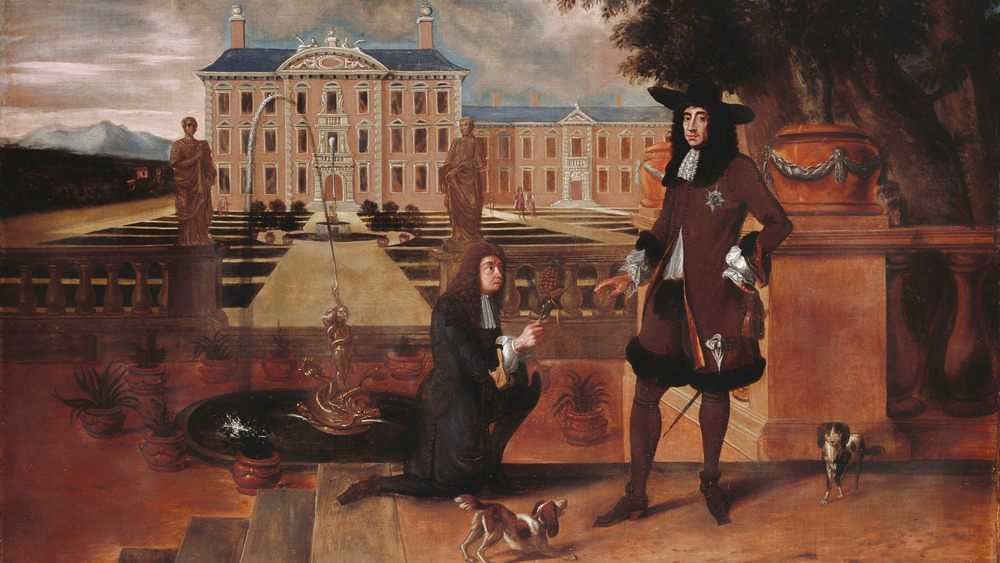The Surprising Reason Pineapples Symbolize Hospitality
If you have a friend who is interested in history, etiquette, or tropical fruit, you may have received a pineapple as a housewarming gift at some point. Where did this tradition come from, and what has given it such staying power?
Pineapples are native to South America, but Christopher Columbus was probably the first European who encountered them upon landing on the Caribbean island of Guadeloupe in 1493, per Mental Floss. As reported by Atlas Obscura, explorers who went to the Caribbean discovered that the indigenous residents of the islands who welcomed strangers would hang pineapples in front of their homes, thus beginning the West's association of pineapples with hospitality.
Columbus brought pineapples back to his home in Spain, where they were instantly popular. People attempted to grow their own, but without a tropical environment, cultivating pineapples is next to impossible. The only option was to import them by ship across the Atlantic Ocean, which took a very long time and led to a lot of spoiled pineapples making their way into Europe.
In the mid-17th century, some green thumbed botanists in England and the Netherlands began growing pineapples in hothouses that mimicked the tropical conditions necessary for the fruit to thrive. Because they were in high demand but short supply, only very wealthy people could afford them, thus making the fruit even more coveted. Charles II of Great Britain went to far as to commission a painting of his gardener handing him a pineapple (seen below).
Pineapples were an expensive status symbol
The popularity of pineapples extended to the colonial United States, where they were imported from the Caribbean and sold for about $8,000 in today's money. Because of the pineapple's role as a status symbol, those who could afford it would throw dinner parties and display their pineapple as a centerpiece, where it would serve as "a symbol of their wealth, hospitality, and status, instantly recognizable by a party's guests," says Mental Floss. A pineapple's role as centerpiece was more important that its role as food, and those privileged enough to have a pineapple generally didn't eat it until it started rotting.
As reported by Atlas Obscura, pineapples were used during the Napoleonic Era by political cartoonists to represent extravagance, and by the 1600s even the Christian church had gotten in on the craze once architect Christopher Wren started adding them to church finials.
Pineapples continue to be associated with hospitality to this day; in fact, the book Welcome To Hospitality: An Introduction, first published in 1994, notes "A universal symbol for hospitality is the pineapple." Colonial decor tends to include images of pineapples, although the trend of displaying a rotting pineapple as a centerpiece is, fortunately, a thing of the past. Several hotels use pineapples in their branding, including Preferred Hotels & Resorts and the Staypineapple collection of boutique hotels.

